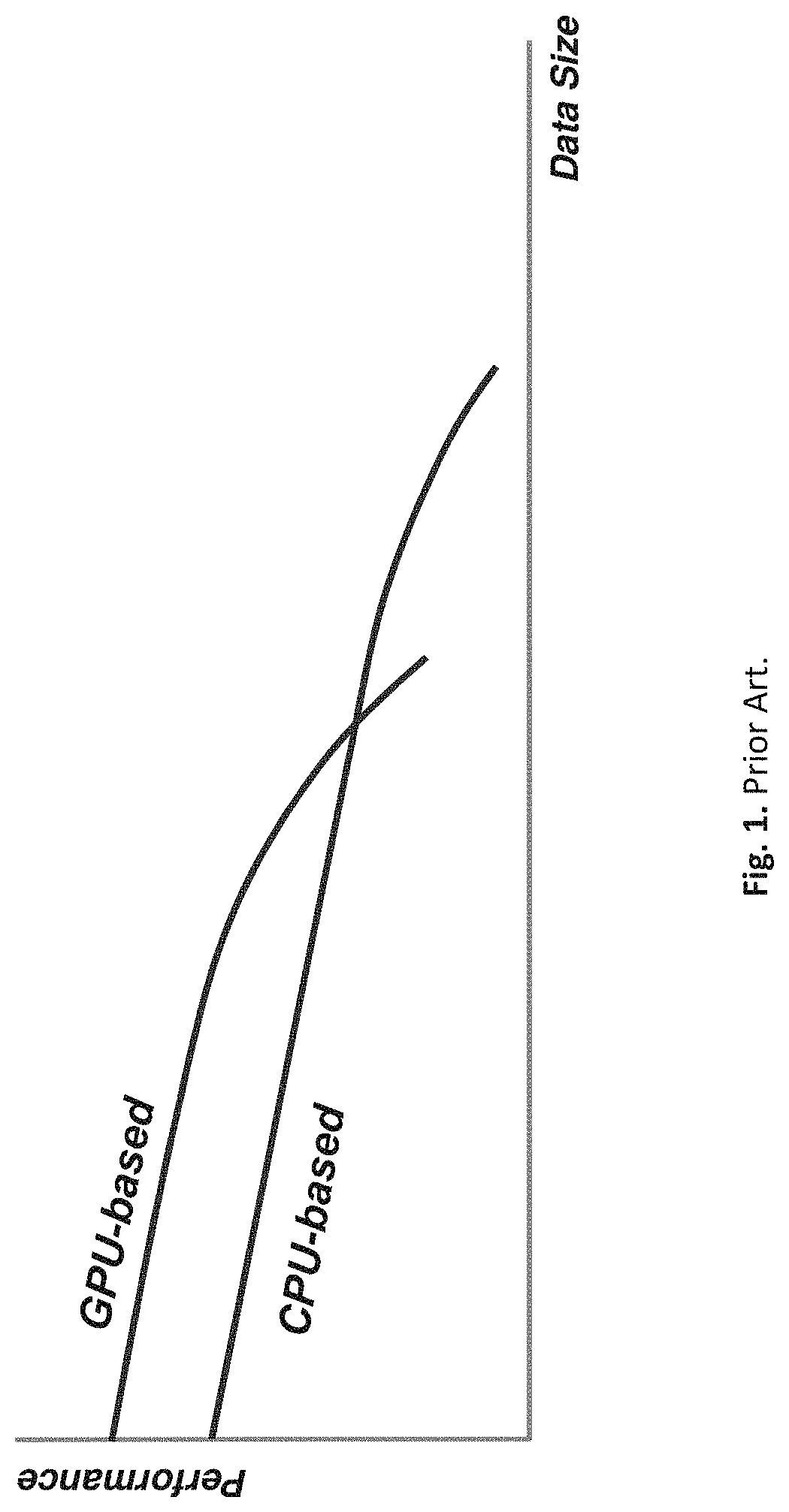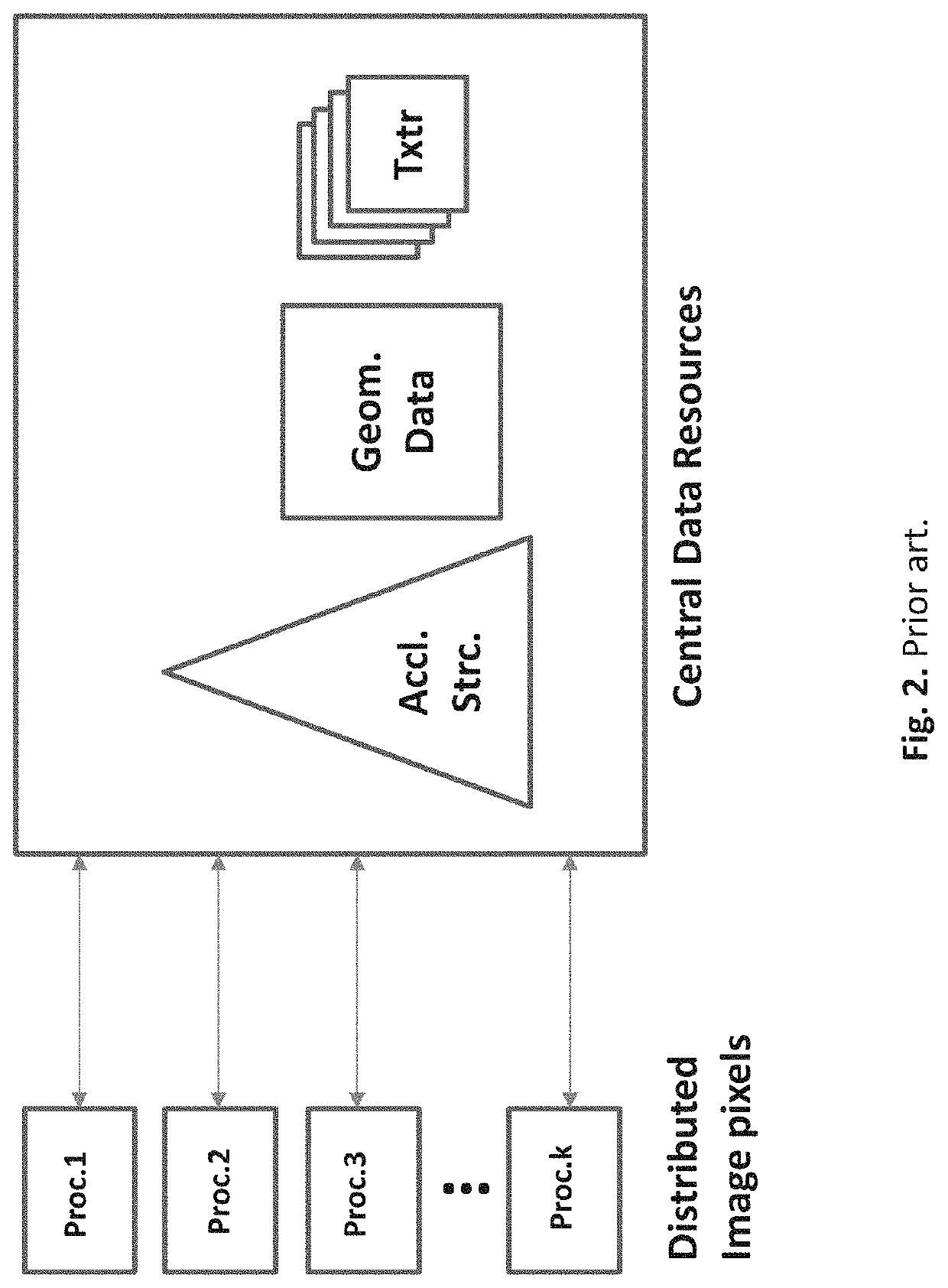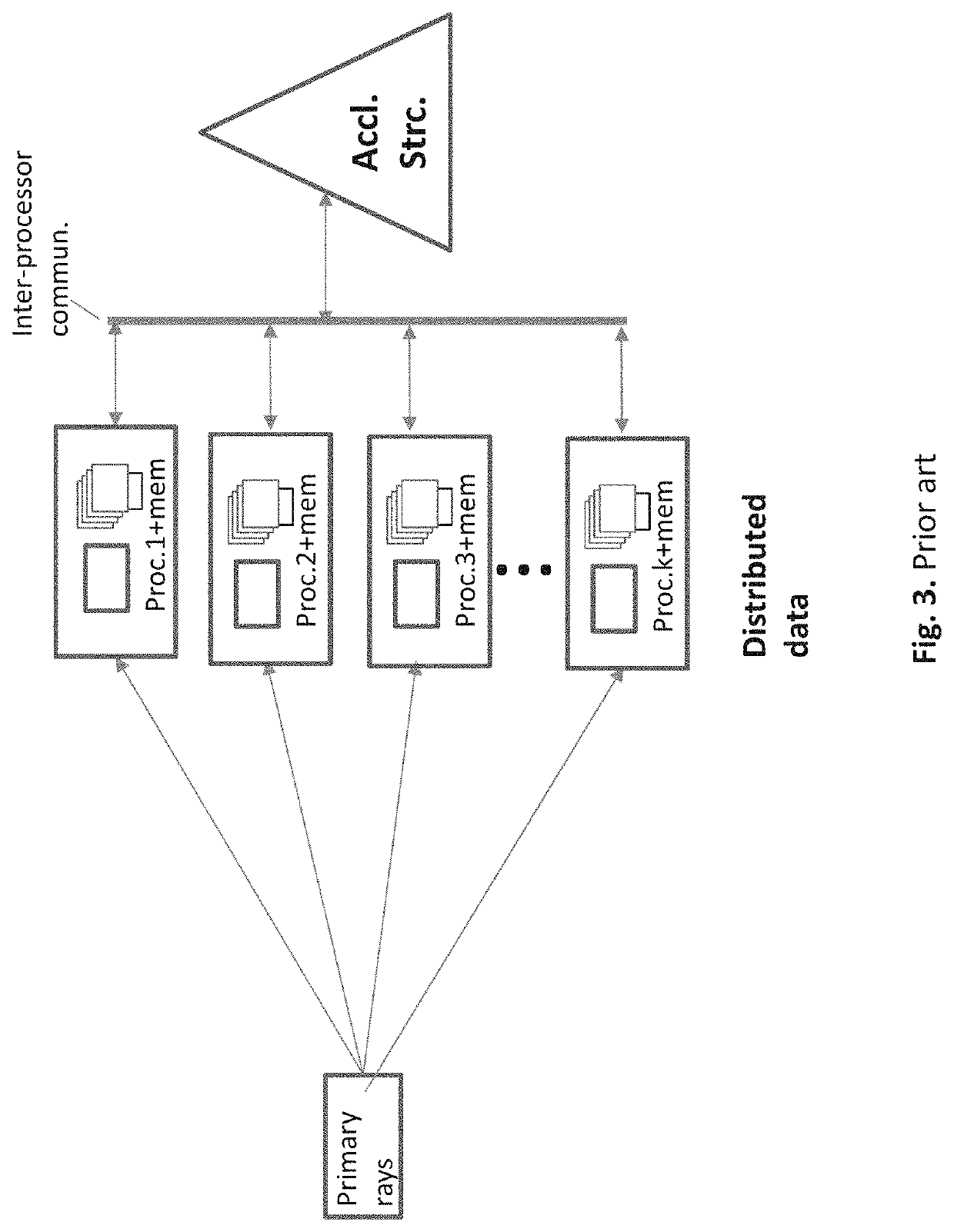Path tracing system employing distributed accelerating structures
a distributed acceleration and path tracing technology, applied in image analysis, 2d-image generation, processor architecture/configuration, etc., can solve the problems of lack of accuracy between projection rays, and achieve the effect of reducing communication, reducing the complexity of traversal, and greatly reducing the amount of traversal
- Summary
- Abstract
- Description
- Claims
- Application Information
AI Technical Summary
Benefits of technology
Problems solved by technology
Method used
Image
Examples
Embodiment Construction
[0051]According to an embodiment of the present invention, the task of traversals is divided between the global acceleration structure, and multiple small local acceleration structures, as depicted in FIG. 4b and FIG. 4b, respectively. As shown in FIG. 4a, the local acceleration structure 41 resides in the cell, along with the local geometry data 42 and textures 43. Each cell is assigned a processor, on a demand driven basis. These rendering processors may come either as a multiple CPU or a multiple GPU based platforms.
[0052]The basic data elements of the global acceleration structure, FIG. 4b, are cells. They are leaves of the binary tree 44, replacing the triangles (or other 3D primitives) of the prior art. The leaves of the local acceleration structure, FIG. 4c, are triangles 45. This partition of the acceleration structure into two components, shrinks the global part of it by many levels, improving the performance. E.g. for a geometric data of 8 million triangles which are distr...
PUM
 Login to View More
Login to View More Abstract
Description
Claims
Application Information
 Login to View More
Login to View More - R&D
- Intellectual Property
- Life Sciences
- Materials
- Tech Scout
- Unparalleled Data Quality
- Higher Quality Content
- 60% Fewer Hallucinations
Browse by: Latest US Patents, China's latest patents, Technical Efficacy Thesaurus, Application Domain, Technology Topic, Popular Technical Reports.
© 2025 PatSnap. All rights reserved.Legal|Privacy policy|Modern Slavery Act Transparency Statement|Sitemap|About US| Contact US: help@patsnap.com



